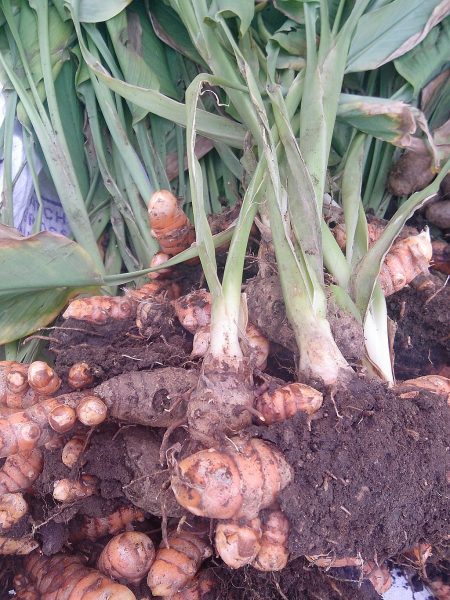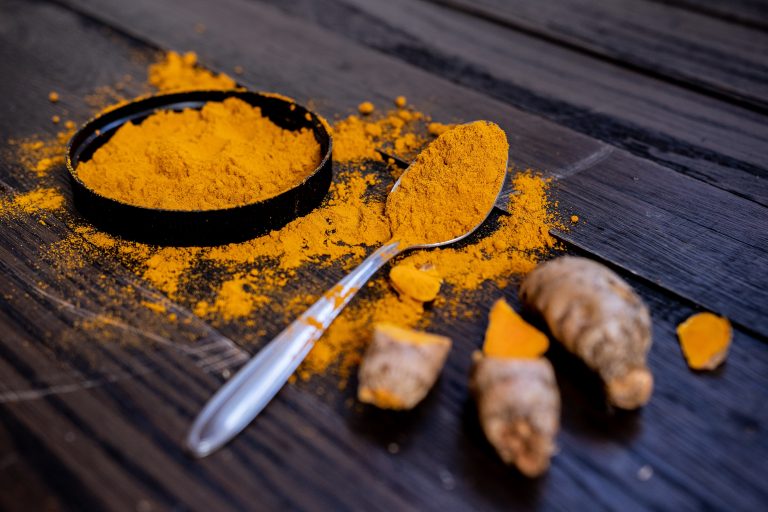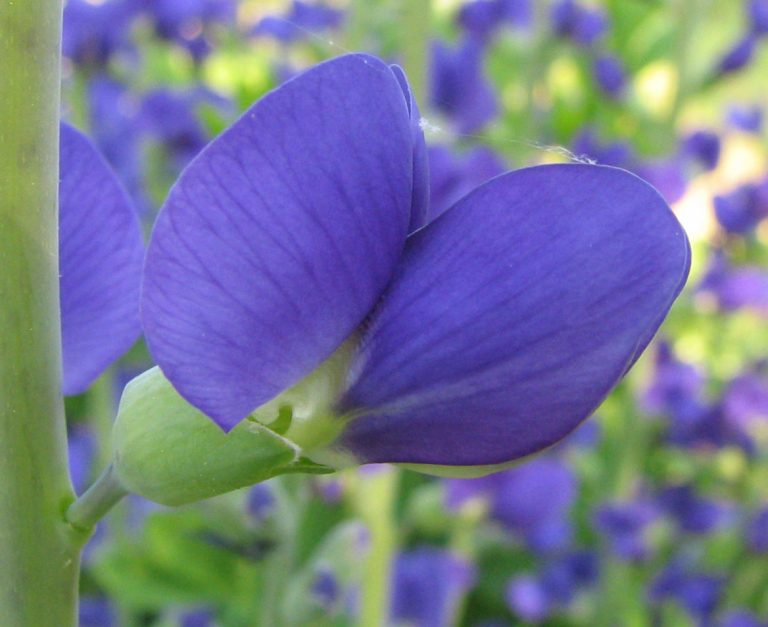Turmeric (Curcuma longa) is a member of the Ginger (Zingiberaceae) family of plants, which produce a flavorful rhizome that grows underground. Grown in southern India, this flowering plant is also called Indian Saffron, and the spice is consumed in large quantities by the Indian nation, being used generously in Indian curries.
If you are unclear about herbs and spices, the thing to remember is that herbs generally come from the herbaceous (leafy green) part of plants, while spices come from nearly all the other parts.
Turmeric has been used as a cooking spice for thousands of years. Cooking pots dating back 2,500 years ago have been discovered with the residue of turmeric, ginger, and garlic.
Turmeric’s medicinal value has also long been recognized by Ayurvedic and Chinese traditional medicine. With increasing interest in natural medicines, the spice has recently gained wide popularity. More and more people are seeing the advantage of natural products in that they are not only effective, but also safe, as therapeutic doses are far below the toxic levels found in chemical medicinals.
Curcuma zanthorrhiza, Javanese or ‘false’ turmeric, is another indigenous species of the same genus which should not be confused with this species. Also growing in Indonesia and Malaysia, it is a much larger plant and has different properties.
Success
You are now signed up for our newsletter
Success
Check your email to complete sign up
Why grow Turmeric?
Besides the obvious fact that plants are a joy to cultivate and care for, and can be quiet companions while still making a bold statement, there are still further reasons to grow turmeric. Although the spice is readily available in dry form, the fresh root will lend a stronger flavor to your cooking, and also enhance its many health benefits, which we will briefly enumerate here.
The compound curcumin found in turmeric is responsible for both the vibrant yellow color, and the spice’s powerful medicinal properties.
Curcumin is a well-known anti-inflammatory. While inflammation can be a good sign that your body is fighting off an infection, when it becomes chronic it has a negative impact on other health concerns. Consuming turmeric can therefore be beneficial in alleviating painful inflammation and also in the treatment of heart disease, Alzheimer’s disease, and arthritis, where inflammation is undesirable.
One of the most powerful antioxidants, curcumin works on the molecular level to kill various cancer cells and reduce the growth and spread of tumors. It is also known to boost brain-derived neurotrophic factor (BDNF) levels in the brain, stimulating the growth of neurons and thereby reducing degenerative brain functions. This may contribute to its usefulness in treating Alzheimer’s, and also depression. One study suggested that curcumin performed as well as Prozac in treating depression.
A valuable tissue healer, it is also effective in treating inflammatory bowel disease and cancers of the colon, stomach, lung, breast, and skin. According to Ayurvedic medicine, inhaling the smoke of burning turmeric will alleviate congestion and may help heal wounds and bruises. Acute skin conditions like chickenpox and shingles respond well to turmeric paste.
How to grow turmeric
Turmeric is a broad-leaf shrub that will grow to a height of about three feet. While the tropical plant does best in USDA planting zones 8 and above, it can also be grown indoors in cooler areas as long as you have ample space by a sunny window.
The easiest way to start new plants is from rhizome cuttings. Allow two to three buds per cutting, and lay the pieces flat on a bed of about two inches of soil. Add enough soil to cover the cuttings, water, and cover the container with a clear lid or place the whole thing in a plastic bag. This will create a greenhouse effect, and keep your nursery uniformly moist. Place the container in a sunny window or another warm place, as insufficient heat can cause the cuttings to rot.

Shoots should sprout from the buds in approximately three weeks. If you live in a warm climate, you can plant your sprouted turmeric out in a sunny area of your garden as soon as the nights are no longer cool. Partial shade at midday is preferable, as the plants do not like intense sun.
If you live in a cooler climate, you will need to keep your plants in a container indoors, and move them outside only after all danger of frost has passed. Planting containers should be broad and fairly shallow, no more than 8 inches deep, as most of the growing takes place near the surface. Fill the planter with rich potting soil, and place the sprouted rhizome pieces horizontally (with sprouts facing up) in shallow holes, about one and a half inches deep. Water well, but allow the soil to dry in between waterings.
If growing indoors, you will want to avoid the problem of fungus gnats or other insects breeding in your soil. Sprinkling diatomaceous earth on the surface is a safe and simple preventative measure against this.
Harvest and enjoy
During the next several months, you should see quick growth into a bushy plant which will produce spiky flower stalks. Seven to ten months after planting, the leaves and stem will begin to brown and wither. At this time, all the energy is focused in the root, or rhizome, and you should harvest your turmeric.
If your turmeric is planted in the ground, use a digging fork to loosen the soil around the perimeter and slowly work your way inward, carefully lifting the roots out as you see them. If they are in pots, rather than digging, and risking potential damage to your crop, dump the whole container out, gently, on the ground. Shake off any loose soil and snip off the dying plant mass, leaving just under an inch of stem to form a sealing scar.
Wash your crop and allow it to dry before storing. At room temperature turmeric will stay fresh for a few weeks. If kept in a sealed container in the refrigerator they will last up to six months. Now you can begin your adventures in using fresh turmeric.
After peeling, the rhizomes can be grated and used to enhance many dishes. Rice, lentils, eggs, chicken, and most vegetables are well suited to this spice. It is worth noting that Curcumin on its own is difficult to absorb. To get the full benefits of this compound, turmeric should be consumed with both black pepper, and fat…Thus the rich spicy Indian curries. Sliced, fresh turmeric can also be used in soups and herbal teas. Experimenting with your harvest will bring an additional benefit, the joy of discovery!
Don’t forget to save some nice, sound rhizomes to start next year’s plants.
Simone Jonker contributed to this report.







